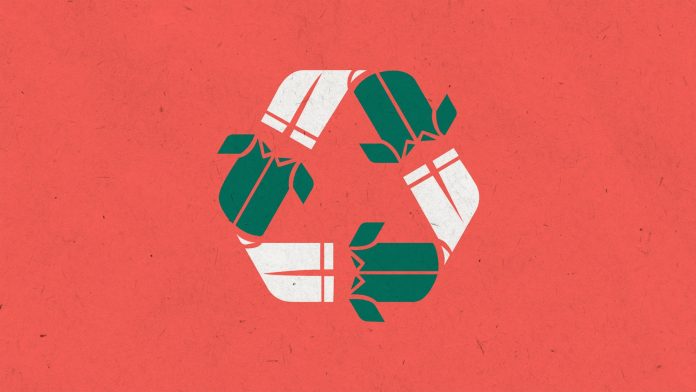
Sustainability is soon becoming a code name and a mission in almost every business. While Larry Fink, Ellen Macarthur, Greta Thunberg speak of sustainability, H&M launches its ‘Conscious Collection’, to support sustainability in fashion. Today with this trend and growing awareness about sustainability in fashion industry – Green is the new Black!
The scale of the global textile industry is enormous. It produces upwards of 100 billion pieces of clothing every year, represents 3% of the world’s GDP and employs around 75 million people. Sadly it also creates 84% of textile waste that is sent to landfills at a cost of USD 3.7 billion every year. This scale of wastage has created an urgent need to recycle textiles and help reduce continued damage to the planet. Further, the EU Legislation 2019, has become stricter and has imposed a circular system instead of the existing linear system to deal with textile waste. Under Article 9(1d), Article 11 (1), and Article 11 (6), it encourages the re-use of textile products along with other measures.

How Recycling and Upcycling of textiles contribute to sustainability?
- It reduces solid waste in landfills,
- It helps to sustain the environment by reducing carbon footprint, and
- It employs semi-skilled workers.
Large retailers like H&M, Ikea, GAP, and American Eagle are already on their way to formulating new strategies for manufacturing and designing garments from sustainable textiles in line with the EU regulations for a sustainable environment.
The universal theme “Green is the New Black”, supports sustainability as the newest megatrend in fashion.
Recently Pascal Brun, H&M’s sustainability manager on introducing the latest collection with a new material called Circulose, explains “Going forward, we need to be using more bio-based materials and use more waste in our collections. These collections are here to help enable the scale of these innovations, and make them more commercial [to us and to other brands].”
Circulose is manufactured by Re:newcell, Sweden. The company Re:newcell it is endeavour to promote sustainability takes worn-out clothes to its plant in Kristinehamn, Sweden, where they de-button, shred, strip the old worn clothes, turn them into a slurry, and then put it through the textile production cycle to finally produce yarn and the circulose fabric. This fabric contains a high cellulosic content which is cotton and viscose.

India contributes to sustainability in fashion
Closer home in India, Geetanjali Woollens Private Limited (GWPL), is a leader in the segment of sustainable yarn/textiles. The company offers an entire closed-loop circular solution for the international apparel brands by upcycling / recycling 100% post-consumer textile materials (discarded used clothing). In 2019, GWPL was awarded the prestigious “Runner Up” title in the Global Circular Awards held in Davos Switzerland by the World Economic Forum during the Jan’19 World Economic forum summit for its unique textile recycling solution and addressing the global concern of textiles going to landfill. Subsequently, GWPL was also Winner of the 1st Indian Circular Awards held during June’19 in New Delhi initiated by FICCI for addressing the global concern of textiles going to landfills. Today it is a contributor to sustainability in fashion by supplying its eco-friendly upcycled yarn to the largest global designers and manufacturers like H&M who have begun to support a global cause.
Biotechnology innovations in fashion
More steps are being taken in the direction of biotechnology innovations to make our clothes more sustainable.
1. Synthetic spider silk
A Japanese biotech startup called Spiber collaborated with North Face to create the Moon Parker. It was made fully out of synthetic silk to boost sustainability in fashion. The lab made equivalent to spider silk is used to create sustainable fibres, gels, synthetic leathers, and more.
2. Sustainable Dyes
The fashion and footwear industry has been a major contributor to the alarmingly high amount of pollution caused to lakes, rivers and other water bodies. With close to 8,000 synthetic chemicals used by them as dyes, it soon became apparent to take necessary steps to reduce or stop them from the usage of these chemicals.
As a solution to this raging problem Berlin-based studio Blond & Bieber developed an all-natural alternative to toxic clothing dyes – made from algae, called ‘living colours’.
In 2109, they collaborated with UK menswear company Vollebak to launch an algae-inspired collection.
3. Climate positive polyester
In San Francisco, a company called Mango Materials is turning methane, a potent greenhouse gas that contributes to the climate crisis, into biodegradable bio-polyester fibres.
The company is on its way to introducing this bio-plastic called PHA to leading activewear and outdoor clothing brands manufacturers.
The future of textiles
Textiles of the future are undergoing a major change. Today the millennial are the most aware of their actions and are ready to embrace technological advances that contribute towards a healthier planet. The sustainability in fashion movement is gathering attention and is definitely here to stay. Yes, GREEN is the new BLACK. Together let’s make it a fashion statement!
